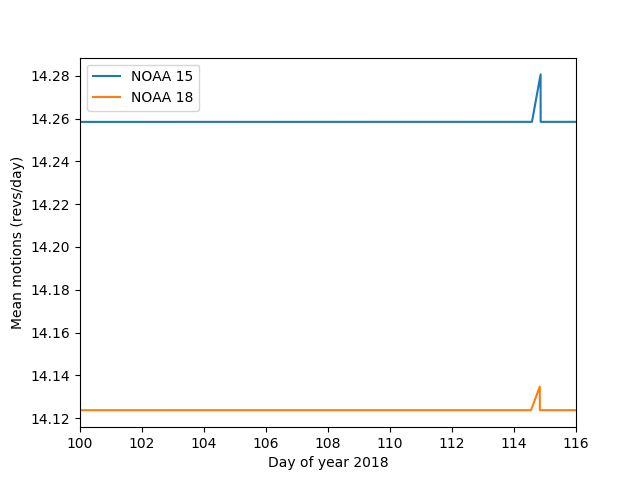Regarding Observation 121974 …
Not sure if its just my station or if NOAA15 was something weird going on.
Regarding Observation 121974 …
Not sure if its just my station or if NOAA15 was something weird going on.
Also seen in
https://network.satnogs.org/observations/122015/
https://network.satnogs.org/observations/122003/
https://network.satnogs.org/observations/121993/ (This one seems to have gain way to high?)
Interestingly not seen in
https://network.satnogs.org/observations/122308/
https://network.satnogs.org/observations/122168/
So this could be another part of it failing intermediately.
I see the exact same thing on NOAA 15 and NOAA 18 passes:
https://network.satnogs.org/observations/121933/
https://network.satnogs.org/observations/121936/
https://network.satnogs.org/observations/121943/
https://network.satnogs.org/observations/121947/
But not on NOAA 19 passes during the same time
https://network.satnogs.org/observations/121940/
I checked my syslog; the passes are starting at the correct time, so it must be the predictions that are wrong.
Possibly the TLE is off abit? As on some of the passes the signal seems to have a slight Doppler effect.
The orbit has > 800 km altitude so TLE need to be quite a bit off for such large effect. Though they could be wrong from celestrak.
Yea True.
I will see if I can compare the celestrak one and another source.
I saw exactly the same, I first believed my computer was overloaded or the time was drifting madly
but other observations were right.
I am on the dev network:
https://network-dev.satnogs.org/observations/22298 noaa15 late
https://network-dev.satnogs.org/observations/22241 noaa15 late (lesser)
https://network-dev.satnogs.org/observations/22143 noaa15 OK (may be a bit late)
https://network-dev.satnogs.org/observations/22291 noaa18 late
https://network-dev.satnogs.org/observations/22237 noaa18 OK
Looks like the TLE has been updated and both NOAA 15 and 18 are now correct. I can imaging a small error in e.g. the orbit phase can easily give several minutes of difference between predicted AOS and actual AOS.
This is quite weird, and something I have not seen before.
Both NOAA 15 and NOAA 18 have bad TLEs on day 18114. Most of the orbital parameters (mean motion, eccentricity, argument of perigee) are quire different from earlier and later TLEs.
This plot shows the mean motion (number of orbital revolutions per day), with a clear spike on day 114.
2 posts were split to a new topic: TLE updates and Scheduling